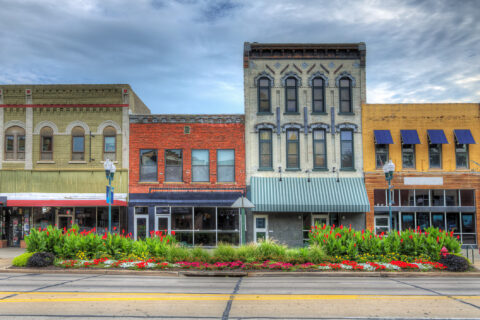“Native people were never homeless before 1492.” It’s a poignant reminder from Derrick Belgarde, Deputy Director of the Chief Seattle Club, a Native-led housing and human services agency in the city of Seattle.
Today, Native people experience the second highest rate of homelessness (10%) in the U.S., accounting for approximately 1.5% of North America’s population. A lack of affordable housing is tied to higher rates of homelessness in general and on Tribal lands.
Compounding the issue is the fact that nearly 80% of Native people no longer live on reservations. Very little federal funding is directed specifically toward them, and Tribal governments usually allocate the funds they do get for life on the reservation as required by the federal government.
Inherited Trauma
Harmful actions by the federal government, such as the Indian Removal Act of 1830 and the forced assimilation of tens of thousands of Native children through boarding schools in the late 19th century, have resulted in generational trauma. In these boarding schools, Native children were stripped of their connections to their culture, forced to lose their language and traditions. They also endured mental, physical, and sexual abuse.
These historical traumas carried in the bodies and minds of Native people through generations have created a great mistrust of government agencies. The results are damaging. Even when assistance is available, few Native people take advantage of those resources. Native people access housing shelters at a lower rate than any other demographic.
When Native people do seek resources, such as housing and employment, systemic and cultural barriers—such as implicit bias and lack of respect or understanding of cultural differences by people involved—present substantial hurdles to securing that next step toward housing and financial stability.
Staying Connected
There are many factors that make it hard or impossible for Native people to stay connected to their community and practice their traditions—language loss, lack of access to traditional territory for medicine, forced removal and assimilation, to name a few—and homelessness adds to these. Oftentimes, shelters and advocates aren’t knowledgeable about Native cultural issues. Nationwide, there’s a shortage of culturally competent outreach, which is key to engendering trust with Native people experiencing homelessness.
However, resources that are designed specifically for Native people are finding success. For example, the city of Minneapolis, MN, partnered with Red Lake Nation in Northern Minnesota to set up a temporary emergency shelter, followed by a permanent affordable housing complex, which included a Red Lake Nation embassy and a healthcare center.
Empowering Native communities to meet the specific needs of its residents is at the core of the Pallet village of 20 transitional shelters that recently opened on the Tulalip Reservation in Washington state. The Pallet village is part of Tulalip’s multi-department, Tribally coordinated effort in response to the opioid and homelessness crisis.
The Tulalip Tribe is running the village and providing culturally appropriate resources, including the Tribe’s Healing Lodge Recovery Program. The lodge offers customized programs for those struggling with alcohol and/or narcotics use and has specialty tracks on cultural and generational trauma therapy. Residents will also have access to job training, mental health resources, and next step supportive housing.
There is no one-size-fits-all approach to solving homelessness. Solutions should be tailored by the affected community and informed by those with lived experience. When advocates and government entities can create an ecosystem of supportive services — such as healthcare, employment, and recovery programs—there’s potential for great progress.
About the Author
Jackie Micucci is the Communications Manager for Pallet®, the national leader in rapid response shelter villages.









